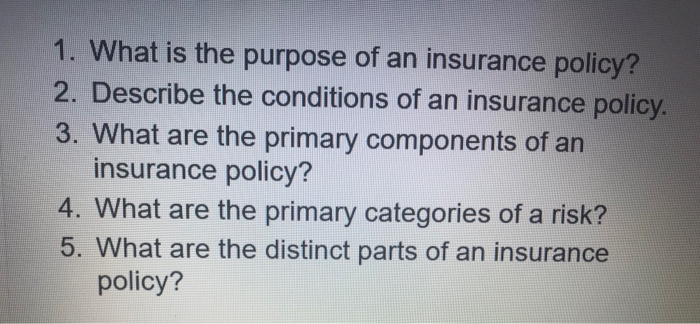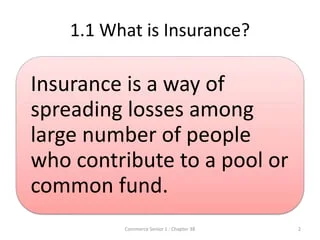Pacific Prime - Truths
The Only Guide to Pacific Prime
Table of ContentsGetting The Pacific Prime To WorkThe Ultimate Guide To Pacific PrimeSee This Report on Pacific Prime8 Easy Facts About Pacific Prime Described
In most states, the insurance firm is needed to send you a copy of the changes to your plan. It is essential that you check out Recommendations or Cyclists so you recognize exactly how your policy has actually transformed and if the plan is still appropriate to fulfill your demands. To obtain a duplicate of your insurance coverage policy, please call your insurance representative or business.
The Institute of Medication (IOM) Board on the Consequences of Uninsurance launches a prolonged evaluation of evidence that addresses the value of health insurance protection with the publication of this record. Coverage Issues is the very first in a collection of six records that will certainly be provided over the next 2 years documenting the truth and repercussions of having an estimated 40 million individuals in the United States without health and wellness insurance policy coverage.

Pacific Prime Fundamentals Explained
The objective of this series of research studies is to refocus plan attention on a longstanding trouble. Following the lengthiest financial growth in American history, in 1999, an estimated one out of every 6 Americans32 million grownups under the age of 65 and more than 10 million childrenremains without insurance (Mills, 2000).

Ten percent of the populace accounts for 70 percent of healthcare expenses, a connection that has stayed continuous over the past 3 decades (Berk and Monheit, 2001) - international health insurance. Hence wellness insurance proceeds to serve the feature of spreading risk even as it increasingly finances regular care. From the perspective of healthcare suppliers, insurance lugged by their patients assists secure an earnings stream, and neighborhoods take advantage of financially feasible and secure health and wellness treatment practitioners and establishments
Government offers medical insurance to populaces whom the exclusive market may not serve effectively, such as handicapped and elderly persons, and populaces whose accessibility to healthcare is socially valued, such as children and expecting females. The best ends of wellness insurance policy protection for the private and neighborhoods, including work environment communities of employees and companies, are boosted wellness end results and lifestyle.
Pacific Prime Fundamentals Explained
Workers rank medical insurance first without a doubt in value among all the benefits offered in the work environment (Salisbury, 2001). Although there have been large financial investments of individual and public funds to supply health and wellness insurance, lots of people still have no insurance coverage. Regardless of comprehensive reporting of survey searchings for and healthcare study results, the public stays overwhelmed and misinformed regarding Americans without medical insurance and the effects of lacking protection.

Without doubt, the complexity of American healthcare financing systems and the wealth of sources of info include in the general public's confusion and apprehension concerning medical insurance stats and their interpretation. This report and those that will adhere to objective to boil down and present in readily understandable terms the considerable research study that births on concerns of health insurance coverage and its relevance.
Fifty-seven percent of Americans polled in 1999 thought that those without medical insurance are "able to obtain the care they need from physicians and health centers" (Blendon et al., 1999, p. 207). In 1993, when national interest was focused on the problems of the uninsured and on pending health and wellness care legislation, simply 43 percent of those polled held this idea (Blendon et al., 1999).

They also get less preventative services and are much less likely to have routine care for chronic problems such as hypertension and diabetes. Chronic diseases can cause pricey and disabling complications Home Page if they are not well handled (Lurie et al., 1984; Lurie et al., 1986; Ayanian et al., 2000). One national survey asked greater than 3,400 grownups about 15 very serious or dark problems.
A Biased View of Pacific Prime
Extra evidence is provided later on in this phase in the conversation of insurance coverage and accessibility to healthcare. https://trello.com/w/pacificpr1me_. People without medical insurance are young and healthy and pick to do without coverage. Practically fifty percent (43 percent) of those checked in 2000 believed that people without medical insurance are more most likely to have health issue than people with insurance
Voters and policy manufacturers in focus group conversations identify those without insurance coverage as youths who have the opportunity to be covered and feel they do not require it (Concierge Novelli, 2001). Contrasted to those with at the very least some exclusive coverage, the uninsured are less likely to report being in exceptional or great health (Firm for Medical Care Study and Quality, 2001).
SOURCE: Facility for Expense and Funding Studies, Company for Medical Care Research and Top quality, based on MEPS information. Youthful grownups in between 19 and 34 are far extra most likely to do not have health and wellness insurance than any type of various other age. This is mainly due to the fact that they are much less commonly eligible for employment-based insurance policy due to the nature of their job or their short tenure in it.
The perception that individuals without insurance coverage have better-than-average health and wellness follows from confusing the relatively young age account of the uninsured with the far better health, generally, of younger individuals. This covers the link in between health condition and health insurance coverage. For those without accessibility to office health and wellness insurance coverage, inadequate health is a potential barrier to buying nongroup coverage since such coverage may be highly valued, leave out preexisting conditions, or be merely unavailable.